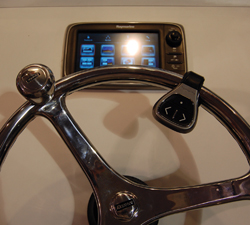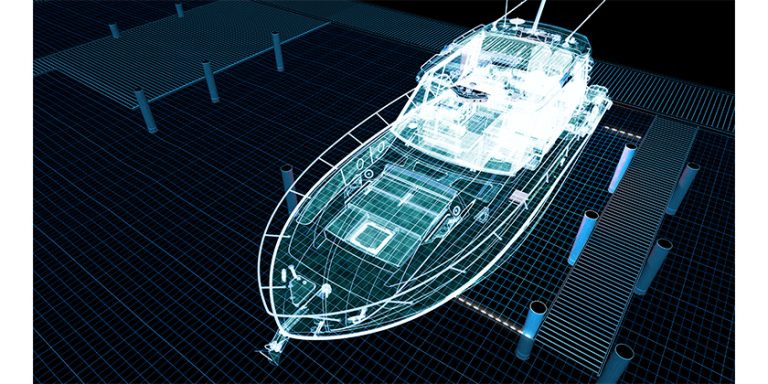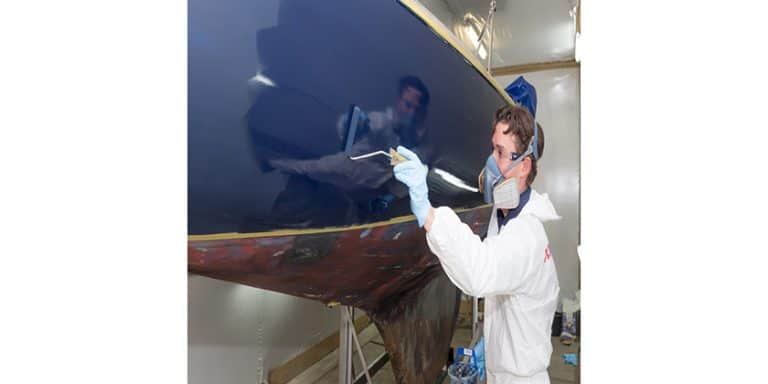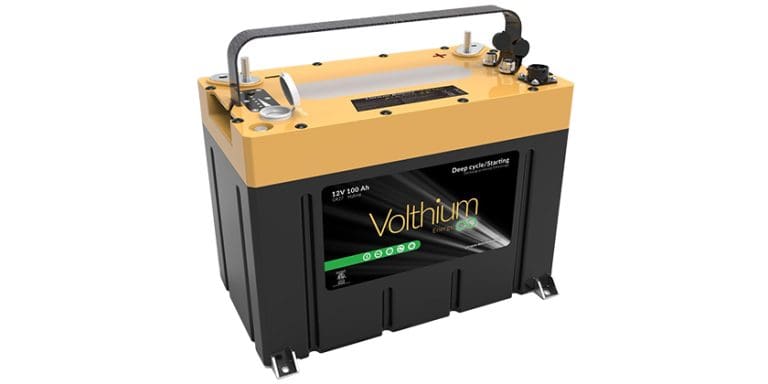Big Navigation Features Migrating to Smaller Systems

In the past three months, the marine electronics industry has announced several new products that clearly show how big-boat navigation features are migrating down to smaller systems. While these new systems are physically smaller and come with smaller price tags too, they still deliver big performance.
You can benefit in several ways. First, the overall prices are down given the performance levels, so you can afford more capabilities for your boat, large or small. For big boat owners, many of these new systems network together, so you can run a secondary screen down to your dinette area for example, where others onboard can monitor your course and other information. You don’t need to be on the helm to see what’s going on.
For express cruisers, fishing boats and cuddy cabins where dashboard “real estate” is at a premium, these new systems can bring high-end performance to your helm and you can now use these systems even when you are travelling at high speed.
Fast boats can make it hard to see the screen and harder still to use the controls. FLIR Raymarine has a fabulous new product called the Raymarine E7 Hybrid Touch. It won an Innovation Award at IBEX 2011, the International Boatbuilders Exhibition held in October.
At approximately $1,800, the E7 has built-in GPS, an embedded digital sounder as well as Navionics charts for the U.S. built in; Canadian charts are available on a micro SD card. All you have to do is buy the transducers and you have a navigation system with GPS and depth sounder.
From here, you can enhance the E7’s capabilities by adding a radar system, a FLIR thermal imaging camera for night vision and on top of that, you can network this too.
The E7 has a dual core processor and dedicated graphics – three processors in all. This results in superfast redraw. There is a zoom rotary dial and the image can draw as fast as you can turn the dial. Or, like your iPad, you can zoom with your fingers, so do whatever is easiest.
The E7 has two different wireless protocols and you can link an iPad or an iPhone and actually see your fishfinder on either display!
Several other manufacturers have new systems that offer similar features, but the one that ‘wowed’ me at IBEX was the Bluetooth-connected remote that attaches to your steering wheel. So, this has no wires. It fastens on the inside of the wheel rim, and has a button to zoom, to add waypoints and even to change ‘apps’. You can scroll and use the device without ever taking your hands off the steering wheel. That will make it much easier to navigate underway – a great improvement!
The latest from Garmin is their GPSMAP® 700 series of chartplotters. With their extra-wide panoramic displays, these new systems start even lower at around $1,500 and they bring fully menu-driven touchscreen control and radar interface to this compact chartplotter. The GPSMAP® 700 is a standalone device, so it does not offer support for the Garmin Marine Network, but it does features a seven-inch WVGA colour display and built-in high-sensitivity GPS receivers. This screen delivers extreme brightness for daytime readability and can adjust down to super low-level dimming for optimum night vision.
Although it’s a standalone device, it has full NMEA 2000 connectivity to display engine data, fuel, wind, autopilot and other data monitoring. Plus, the GPSMAP® 700 includes a standard radar port that lets you connect any Garmin GMR series marine radar for target scanning on your chartplotter.
Other important features are that these are the first touchscreen chartplotters from Garmin to offer a full complement of sailing-specific wind gauges.
Like most other manufacturer’s systems in the market segment, you can also get XM or Sirius weather, lots of digital radio channels and fast, easy zooming and waypoint addition.
Arriving in stores this January is the latest from Lowrance – its HDS® Gen2 High Definition System. The all-new HDS Gen2 provides faster processing speed and StructureMap™ view which is a powerful tool that allows users to overlay and save StructureScan® sonar images on a chart for review on and off the water.
Typical of the advances we are seeing in the marketplace, the new Lowrance HDS Gen2 displays feature double the memory and twice the processor speed of first-generation HDS models. The big benefit is faster start-up and menu operation with lightning-fast chart panning and zooming speeds. When paired with the LSS-1 StructureScan Sonar Imaging module, users can activate the StructureMap overlay and scan images directly on a chart in real-time, or create StructureMap charts of favourite boating, fishing and diving areas.
This year, spend some time at the boat shows to learn more about the simply mind-boggling range of capabilities that these new systems offer. Onboard system networking, NMEA 2000 compatibility, wireless connection to other devices like iPads and smart phones, as well as faster processing speeds and brighter displays are just the start. There is NMEA 2000 engine monitoring and AIS as well as a variety of alarm functions.
You can find the equipment that is best suited to your needs, whether that’s sailing, running a fast centre console fishing boat, or spreading total boat information to lower helms and cabin areas. This winter there’s something new for every interest.




























